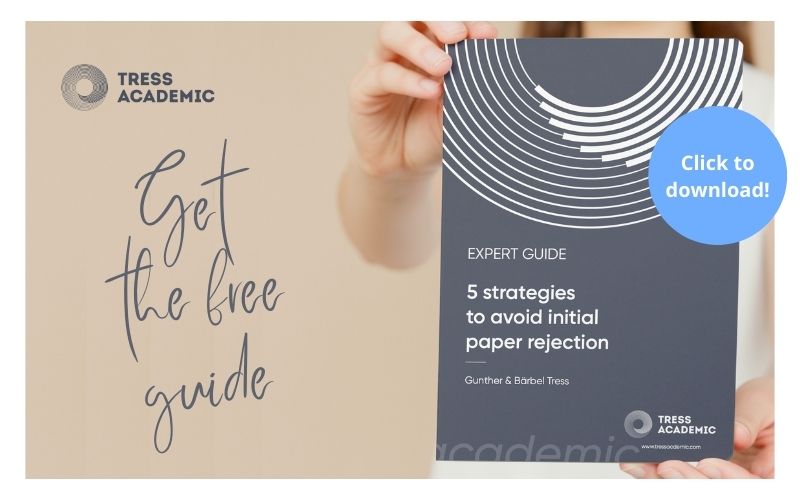Publishing a paper in a good journal is not about being lucky or knowing the right people, and it doesn’t require magic either. Getting published in a good journal requires solid scholarship that is presented in an excellent way to the right audience. Below, we suggest 10 steps to help you on this journey.
When you have performed good research and have spent a lot of time collecting data, analysing samples, or running experiments, you don’t want this work hidden away in a drawer. You want your research to be available for your peers so they can acknowledge and build on your work. Writing up your research is the key to this end, and you want your work published in a good journal so that many of your colleagues will see it. It is a great reward for the hard work you did and an important building block for your further career.
So instead of dumping your good work in a journal where nobody will see it, you’ll aim to publish it in a good journal—but how to do this?
1. Define your paper story and its key message
A good paper, like any good text, is not an accumulation of facts and numbers interrupted by figures and graphs. That would be boring for readers, and they would probably briefly browse through your paper to see what the highlights are. Therefore, good journals aim at providing their readers with more than isolated details about your research that could be looked up in a dictionary. They prefer you tell an original story. Stories are easier to remember than single facts and they help place your work in a larger context. To craft such a paper, think about the story and the new, exciting message you can tell with your research. There needs to be a clear message–readers don’t want to guess what you are trying to tell them.
2. Define your paper audience
When writing your paper, it is easy to forget that you’re not writing it for yourself–you write for your readers! But who are those readers? Just assuming that researchers in your field are interested in your work might be too optimistic. You know from experience that you do not read every single paper in your field. To get published, you should develop a clear idea of the characteristics of your potential readers. Once you have defined your audience, you can write the paper to make it fit your audience.
3. Decide on a journal that fits your audience
Once you know your story and the audience, select a journal that serves this audience and would be interested in publishing your story. Look at post #91 for how to Find the right journal for your paper following these 8 steps. Make it explicitly clear why you think your story is worth being told, why they should publish it, and the relevance of your work to their audience. Don’t assume this is obvious and easy to find out for them–you have to be explicit in your paper about how your paper contributes to the field of the journal.

4. Present robust and reliable findings
Your story provides the context for your research and the message that you want to communicate. The power and credibility of your message deeply depends on the reliability and robustness of your approach. When you address a relevant question in your paper, it is essential that your readers can understand how you approached the question and what you found out. Make sure you explain in full detail and without gaps how you’ve conducted your research, and then present results that you can confidently rely upon. The journal space is limited, so consider presenting some of the specific material in an online appendix.
5. Adopt a writing style to fit your audience
There is not one scientific style that fits all papers and all journals. You’ve decided on a specific audience and a specific journal, now try to understand how research results are communicated within this community. Read other papers from that community in your chosen journal. You will see that some papers present a lot of details on a specific method, while others don’t because it is common knowledge for the audience. That means instead of applying your preferred writing style, put yourself in the position of your audience: What information do they need and how will they best understand it?
6. Edit your text carefully
Even if your story is a strong one and your results are mind-blowing, if your text is not well written, you have no chance of making it into a good journal. If your text is poorly written or not well edited,they will not read far enough to identify the value of your paper. Good journals get many submissions. They can select the papers they want to publish. If they get a paper that doesn’t read well, they can assume that the research presented is of similar quality. Spend enough time to edit your paper, i.e. work on the content of each paragraph, the clarity of your messages, the expressions that you use, check whether your audience is familiar with them, proofread the language, and check the length of your text. A text that reads fluently is more convincing than a complicated one that requires several reads.

7. Ask for feedback before you submit
You want the journal and its audience to support your paper and publish it. Of course you think your paper is good enough to meet their standards, but can you be sure? You shouldn’t risk paper rejection because of avoidable mistakes. Ask an experienced colleague from your field of research to read through your manuscript and provide you with feedback. An independent colleague can more easily identify weak parts in your paper, and once you know them, you can fix these issues before you submit.
8. Stick closely to the journal format
Most journals have a specific format, a house style, for submitted papers. Don’t think you can take a shortcut and can get around formatting your manuscript according to these requirements. Try to submit in a format that comes as close as possible to the way they want it. Then the journal knows that you have written the paper for them and you’re not trying to submit from one journal to another. Some journals have rather loose formatting rules, and others very specific formatting rules. Whatever they are, stick to them, even in your first submission.
9. Respond to all reviewer comments
Good journals run a reliable peer-review process. Your paper will be sent to several independent reviewers, and journal editors also have a close look at it. This process attempts to identify problems, mistakes, or any lack of clarity in a paper before it’s published, with the intention to eliminate these issues, if possible. Therefore, you can expect that you will get review reports back from the journal where reviewers ask for changes and suggest improvements to your paper. These review requests are typically not optional, and you should make sure that you consider each of the comments seriously and respond to all of them. Check post #32, How NOT to react when you receive review reports, to understand how to read review requests.
10. Don’t give up, defend your work
We haven’t seen many papers that went smoothly from submission to acceptance. When reviewers ask you to change your manuscript in some parts, don’t be surprised. Your paper has been reviewed by other experts in your field, and they can have good ideas on how to improve a paper. If you can follow their suggestions, do it. If you disagree with them, no problem either, as long as you can defend your work based on good evidence. You do not have to agree with all reviewer comments. In our post #34, Seven features of a good response to reviewers, you’ll find suggestions for how to respond in such cases.
Conclusion
The originality, relevance, and robustness of your research are key pillars when it comes to getting published in a good journal. So it matters which part of your research you pick for publication. Be selective and take the good stuff, and leave out the less interesting bits. Then, it’s all up to you to get this work into a journal. To be on the safe side, double check post #120, How do you prevent paper rejection?
Resources:
- Smart Academics Blog #32: How NOT to react when you receive review reports
- Smart Academics Blog #34: Seven features of a good response to reviewers
- Smart Academics Blog #91: Find the right journal for your paper following these 8 steps
- Smart Academics Blog #120: How do you prevent paper rejection?
More information:
Do you want to successfully write and publish a journal paper? If so, please sign up to receive our free guides.
Photo by Volkan Olmez on Unsplash
© 2022 Tress Academic
